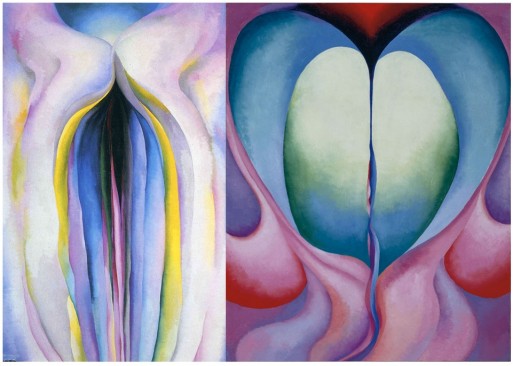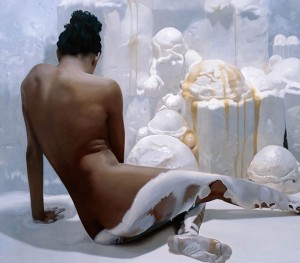 A friend once said to me “competitions are only as good as the judges,” and so it goes that a book on 1001 Paintings You Must See Before You Die can only be as good as its editor. When I initially thumbed through this book, it was so odd. I immediately wondered, “Who is this editor?”
A friend once said to me “competitions are only as good as the judges,” and so it goes that a book on 1001 Paintings You Must See Before You Die can only be as good as its editor. When I initially thumbed through this book, it was so odd. I immediately wondered, “Who is this editor?”
Now don’t get me wrong, I’m a big fan of the 1001 books you should see (or whatever) before you die series, but this book threw me for a loop. Do I discredit it, no. But is it the book I think it should be, no again. I had to web search the editor Stephen Farthing to learn he’s a figurative artist, which is why the book is bent so visually heavy in such a direction. Let’s just say he’s seriously curating what we must see to his very personal idiosyncratic liking.
While it’s true any editor’s preferences would come though (that’s the point), it becomes glaringly clear Mr. Farthing’s highlighting figurative ones at any expense. Let’s take one of many examples with Georgia O’Keeffe’s “Nude Series VII.” I will never forget walking into a large room of her retrospective and twirling to view her signature flower paintings while actually blushing at the obvious (but never before perceived) vaginas nestled within each. A loaded perception well worth noting. Mr. Farthing instead culls an obscure O’Keeffe nude. To be honest, you’d be hard pressed to find an artist who has not dabbled in nudes since “Life Drawing 101 (not 1001)” is the prerequisite of any art education.
Koons’ exclusion left me wondering about the politics of a personal relationship (or lack of) with Mr. Farthing. I’m all too familiar with how politics can impact things behind the scene.
The question with this book becomes who is the audience? It’s blatantly not the average person given 1001 Paintings You Must See Before You Die will not inundate you with the greatest hits. Stephen Farthing makes a point to note in his intro that you may make the “assumption that a book carrying this title might also be a catalog of good paintings” even admitting his readers may wonder if there “is a common thread running through (his selection)…” – yes indeed i did. The intro lets us know he’s well aware of how odd and offbeat his curation is. Case in point is my favorite artist Jeff Koons, whose “Balloon Dog” in 2013 was the “most expensive work by a living artist sold at auction” according to the New York Times. Koons’ exclusion left me wondering about the politics of a personal relationship (or lack of) with Mr. Farthing. I’m all too familiar with how politics can impact things behind the scene.
All this said, there are some tasty treats. A refreshingly unexpected David Hockney non-LA pool painting of “Mr. and Mrs. Clark and Percy” (unknown to me), yet a classic-feeling 1970s painting possesses a transfixing mood – almost haunting – that I could not let go of. Perhaps in lieu of Koons, a wonderful Will Cotton known for his sweet saccharin-embellished nudes is included. Once I let go of my desire to share good works with the average person, the book becomes a rare meal – almost foraged food, in its own right. Especially for anyone with a fine eye in need of some highly unique fine dining.
What I found both revealing and disturbing was the editor’s selection of Francisco Goya’s grotesque “Saturn Devouring His Son” painting as the only full page image placed exclusively at the introduction. Everything about the painting rings insensitive for a book with a title about dying. From the painting’s bloody savageness, broad raw technique and troubling placement in Goya’s dining room to the layered implications behind the interpretation of such a mind-bending Greek myth.
What does a bleak “black painting” of a madman eating his child say about what’s to come in a book or the editor himself?
What does a bleak “black painting” of a madman eating his child say about what’s to come in a book or the editor himself? I’ll leave you hanging on this one and spare you from including an image of the painting in this post.

 1001 Paintings You Must See Before You Die: Revised and Updated 2011 edited by Stephen Farthing
1001 Paintings You Must See Before You Die: Revised and Updated 2011 edited by Stephen Farthing




 Passing of Beloved Comedian Births a New Comedy Festival
Passing of Beloved Comedian Births a New Comedy Festival

 The Spiritual Symbolism of Cardinals
The Spiritual Symbolism of Cardinals














